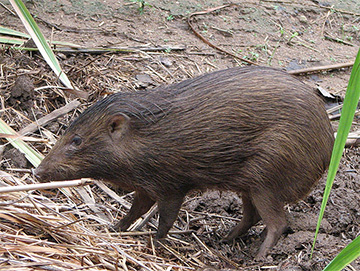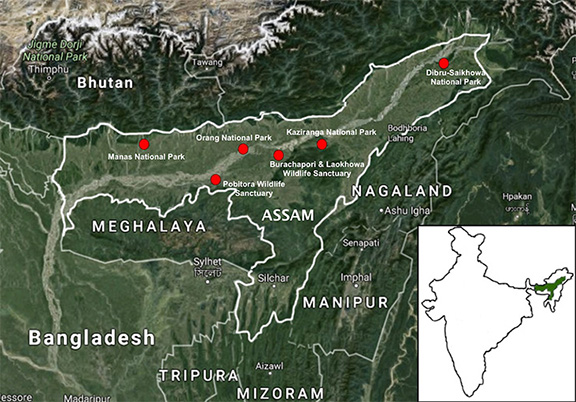Important Facts For Prelims
Pygmy Hog
- 23 Jun 2021
- 3 min read
Why in News
Recently, eight captive-bred pygmy hogs, the world’s rarest and smallest wild pigs, were released in the Manas National Park of Assam.
- This is the second batch to have been reintroduced into the wild under the Pygmy Hog Conservation Programme (PHCP) in a year.
Key Points
- Pygmy Hog Conservation Programme (PHCP):
- The PHCP is a collaboration among Durrell Wildlife Conservation Trust of UK, Assam Forest Department, Wild Pig Specialist Group of International Union for Conservation of Nature (IUCN) and Ministry of Environment, Forest and Climate Change.
- It is currently being implemented by NGOs - Aaranyak and EcoSystems India.
- Conservation of pygmy hog was initiated by noted naturalist Gerald Durrell and his trust in 1971.
- The pygmy hog was brought back from near-extinction by the partnership effort, and now moving towards the establishment of a population across the entire range.
- Six hogs were captured from the Bansbari range of the Manas National Park in 1996 for starting the breeding programme.
- The reintroduction programme began in 2008 with the Sonai-Rupai Wildlife Sanctuary, Orang National Park and Bornadi Wildlife Sanctuary, all of them are in Assam.
- By 2025, the PHCP plans to release 60 pygmy hogs in Manas.
- About Pygmy Hog:
- Scientific Name: Porcula Salvania

- Features:
- It is one of the very few mammals that build its own home, or nest, complete with a ‘roof’.
- It is also an indicator species. Its presence reflects the health of its primary habitat, the tall, wet grasslands of the region.
- Habitat:
- It thrives in wet grassland.
- Once found along a narrow strip of tall and wet grassland plains on the Himalayan foothills – from Uttar Pradesh to Assam, through Nepal’s terai areas and Bengal’s duars. Today found mainly in a small population in Assam.
- Protection Status:
- IUCN Red List: Endangered
- CITES: Appendix I
- Wildlife (Protection) Act, 1972: Schedule I
- Threats:
- Habitat (grassland) loss and degradation, and illegal hunting.
- Scientific Name: Porcula Salvania







